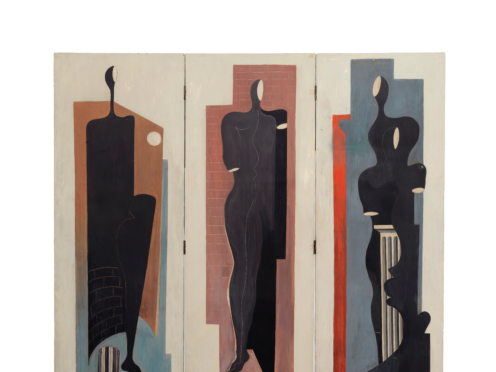Ministers have stepped in to keep four rare early works by Francis Bacon – worth a combined total of £3 million – in the UK.
A painted screen valued at £2.5 million, believed to be the figurative painter’s earliest-surviving large-scale work and his earliest-surviving figure painting, is one of the items being blocked from export.
The screen was completed at the start of Bacon’s career in around 1930 and was his first work in triptych, in which a picture or relief is carved on three panels, attached together and usually presented as an altarpiece.
The other items placed under an export bar are three rugs that were sold separately at auction, each considered among the finest modernist carpets in existence and described as “rare survivals of a very limited production of a group of rug designs” by Bacon.

The rugs are valued at between £146,000 and £186,000.
Arts minister Michael Ellis said: “Francis Bacon is one of our most respected and renowned artists, whose works had a huge influence on modern art.
“It is right that we try to keep these outstanding works in this country, where they could inspire our next generation of world-class artists.”
Experts on the Reviewing Committee on the Export of Works of Art and Objects of Cultural Interest (RCEWA) recommended that the works be kept in the UK because of their “outstanding aesthetic importance” as well as their value to the study of Bacon.
Born in Dublin, Ireland, to British parents, Bacon took up painting in his 20s and went on to become a world-leading artist and one of the most prominent of the 20th century.
RCEWA member Richard Calvocoressi said: “Given how much of his work Bacon destroyed, it is crucial that we try to retain these rare early examples in this country.
“Bacon’s first short career as an interior designer, principally of modernist furniture and rugs, informed so much of his later painting – not least his feeling for space and structure.”
A decision on the export ban will be made in July and may be extended if a serious intention to raise funds to purchase the items is made at the recommended price for each item.










